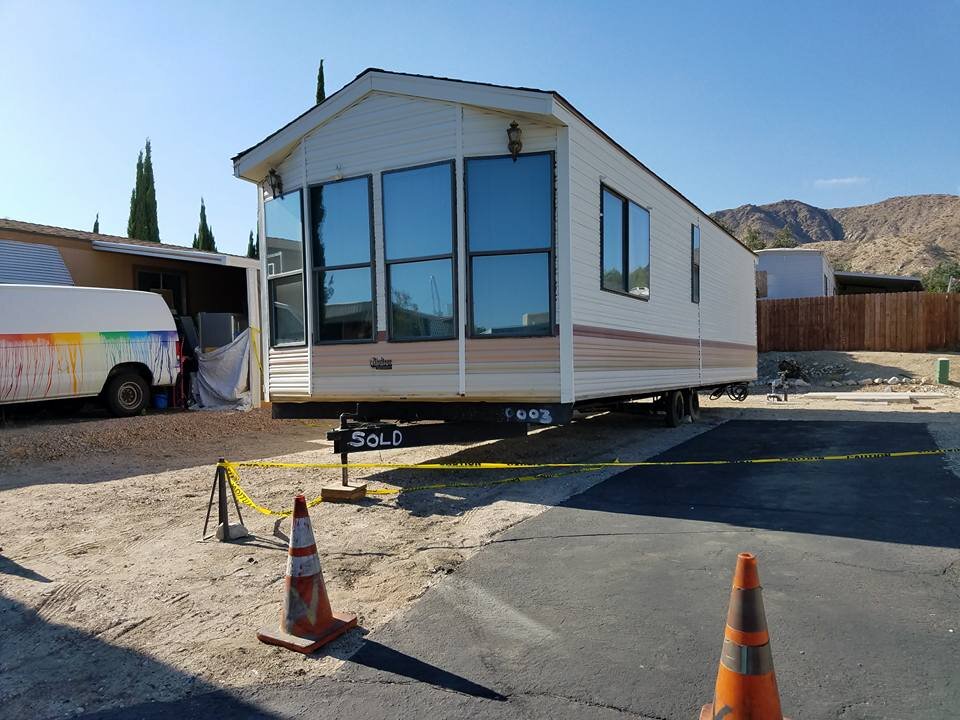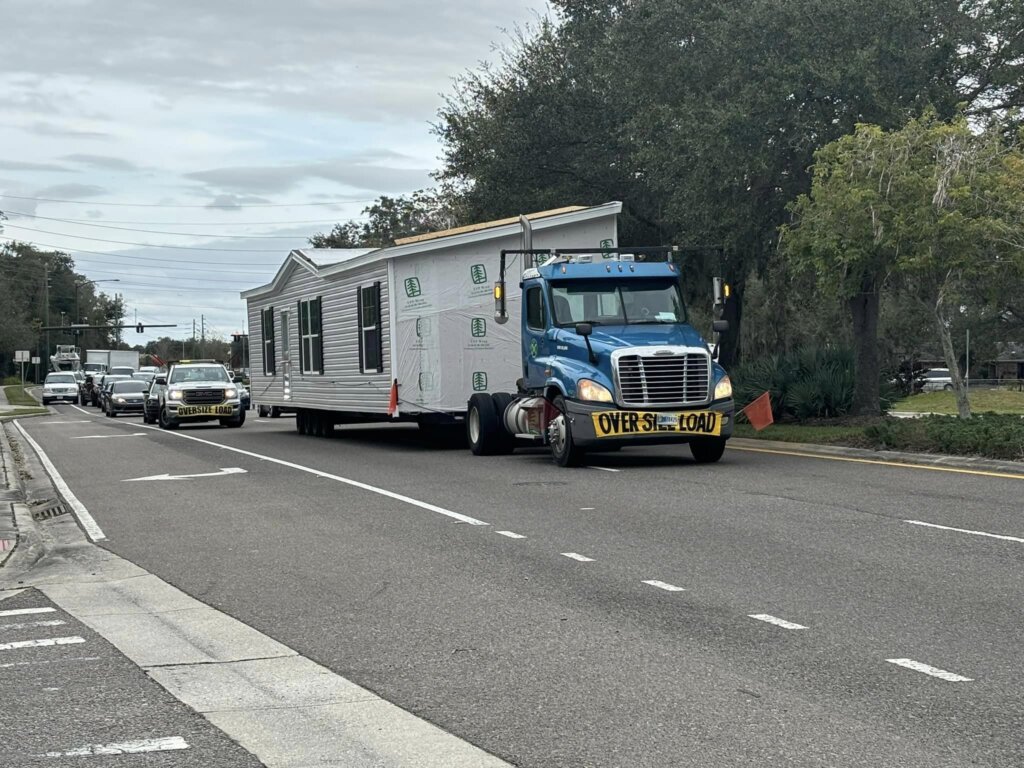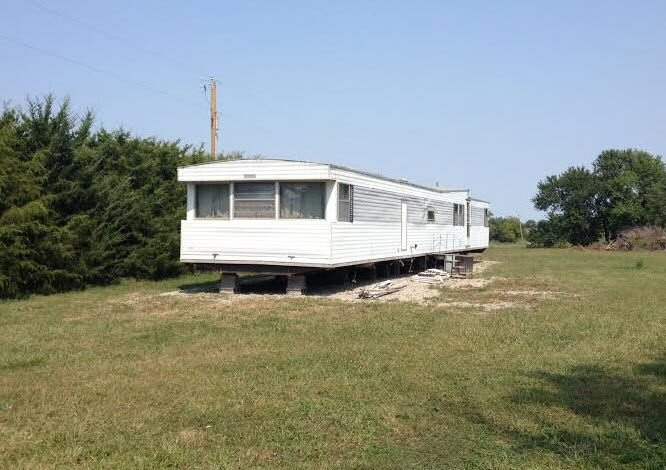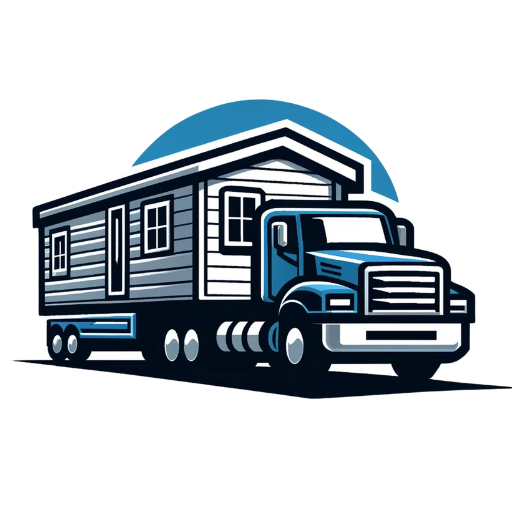
Mobile Homes: From a Secured Option to a Nightmare
The American dream of homeownership has become a nightmare for many, with housing costs skyrocketing to levels never seen before. Mobile homes, once seen as an affordable housing option, are now facing the same fate. This shift has impacted millions of Americans, particularly those seeking cheaper alternatives to traditional houses or apartments. The rising mobile home cost, including lot rent and mobile home transport cost, has transformed what was once a beacon of hope for many into a financial burden.
Mobile home parks, which house approximately 20 million Americans, are undergoing significant changes. The population residing in these communities often includes vulnerable groups such as seniors, individuals with disabilities, and those relying on government assistance. As private equity firms purchase mobile home lots to repurpose them for more profitable ventures, residents face uncertainty about their future. This situation raises questions about the sustainability of mobile homes as a viable housing option and highlights the need to explore new housing alternatives to address the growing affordability crisis.
Housing Market Crash of 2008 Turned Mobile Homes from Affordable Options to Unreachable Dreams
2008 Economy Crash
The 2008 economic crisis marked a significant turning point in the housing market, affecting the landscape of affordable living options. This transition came with a severe economic recession, similar to previous market crashes. Thus reshaping the American dream of homeownership.
During the 2008 Great Recession, the nation experienced a shift from an “owner” focus to a “renter” focus as many people lost their homes and were forced to seek rental housing. This sudden change in the supply and demand dynamics occasioned a great impact on the mobile home park cost, particularly affecting those looking for affordable living options.
Impact on lot rent prices
The repercussions of the 2008 crash extended way beyond traditional housing, it even affected the mobile home parks. As apartment rents rose to an average of approximately $2,000 per month, mobile home parks found themselves in direct competition with apartments. This competition led to a substantial increase in mobile home park cost in lot rents, as they offered the only affordable detached dwelling with a yard.
Surprisingly, some experts consider the Great Recession as a blessing for the mobile home park industry. The economic downturn created an environment where assets could be purchased at lower prices, draining the “fluff” out of valuations. Those who invested in mobile home parks immediately following the 2008 crash reaped significant benefits.
Same prices as traditional housing
Despite the initial promise of affordability, mobile homes have not remained immune to the broader housing market trends. The average cost of a mobile home in the United States has risen to $124,700. Breaking this down further, a single-wide mobile home averages $85,200, while a double-wide fetches around $155,400.
Regional differences play a significant role in mobile home pricing, influenced by factors such as land prices, demand, and local economies. For example, Texas, positioned in the South, offers some of the most affordable prices for single-wide homes in the nation. However, this affordability is relative and still means a significant commitment for many Americans when it comes to mobile home parks.
The decay of rental housing affordability, which began long before The Recession of 2008, has only worsened in the past decade. Between 2001 and 2009, the share of renters paying more than 30 percent of their incomes for gross rent jumped from 41.2 percent to 48.7 percent. Even more concerning, the proportion of renters allocating over half their incomes to housing climbed from 20.7 percent to 26.1 percent during the same period.
This trend has continued well beyond the aftermath of the 2008 crash. Between 2007 and 2017, an additional three million households started paying more than 30% of their income toward rent, with half of them spending over 50% of their income on housing costs. These statistics underscore the ongoing challenges in finding affordable housing options, even in what were once considered more economical alternatives like mobile home parks.
The Most Vulnerable Population Shares the Same Uncertain Future When it Comes to Living in Manufactured Homes
20 million Americans live in manufactured homes
Mobile homes has long been an important source of affordable living in the United States. Currently, approximately 20 million Americans reside in manufactured homes, representing about 6% of the population. These homes, which have their roots in the early travel campers of the 1920s, have evolved to become a significant part of the nation’s housing stock.
Today, mobile home parks consists of 6 million units and constitutes the largest share of unsubsidized low-income housing in the country. Modern manufactured homes often feature tight building envelopes, energy-efficient appliances, and design elements such as porches, garages, and bay windows, making them comparable to traditional housing options.
Incapacitated and elderly people are among the most affected
The population living in mobile home parks often includes some of the most vulnerable members of society. Many residents are elderly, aged 65 and above, or individuals with disabilities who may have had to leave their jobs due to health issues. These groups are particularly susceptible to the challenges posed by rising housing costs and changes in the manufactured housing market.
Over 10 million households headed by someone sixty-five and older are cost-burdened, paying more than a third of their income on housing. Even more concerning, half of these households allocate more than fifty percent of their income to housing expenses. This financial strain often forces these vulnerable populations to cut back on essential needs such as food and medical care, which can be especially detrimental for those with chronic health conditions.
Limited supply and high demand
Despite the crucial role manufactured housing plays in providing affordable living options, the supply remains tightly constrained. The United States sees the construction of only about 10 new mobile home parks each year, while approximately 20 are demolished. This results in a net decrease, making mobile home parks even scarcer and potentially driving up costs for residents.
The limited supply, coupled with the rising costs of single-family homes and apartment rents, has led to increased demand for mobile home parks. This scarcity has transformed mobile home parks into a unique commodity in commercial real estate, potentially leading to substantial financial benefits for investors but creating uncertainty for residents.
As a result, many vulnerable populations living in manufactured homes face an uncertain future. The combination of rising costs, limited supply, and potential redevelopment of mobile home parks puts these residents at risk of displacement and housing insecurity. This situation underscores the need for policymakers to address the challenges facing manufactured housing communities to ensure that this vital source of affordable housing remains accessible to those who need it most.

The Cost of Mobile Home Ownership: When the Dream Turns into a Financial Trap
Mobile homes have long been viewed as an affordable housing option, particularly for low- and moderate-income households. The average sales price of a new manufactured home in 2018 was $79,000, less than half the price of a new site-built home, which averaged almost $300,000. Even when including mobile home parks costs, a new site-built home is still 85% more expensive than a comparable single-section manufactured home and 36% more expensive than a double-wide home.
Average person vs. corporates
For the average person, mobile home park lots can seem like an attractive option due to its affordability, and still be seen as a major investment, but for corporates, it’s a golden opportunity. They would inflate the offer just to force families out of the bid.
One significant issue is financing. Chattel financing, often used for mobile home parks, may have fewer consumer protections than traditional mortgage loans. Additionally, mobile homes typically depreciate over time, unlike site-built homes that tend to appreciate. This depreciation can make it difficult for owners to build equity in their homes.
From mobile home lots to more lucrative ventures
The landscape of mobile home ownership is changing rapidly, particularly when it comes to the land on which these homes sit. Many mobile homeowners are finding themselves in a precarious position as private equity firms and corporations purchase mobile home parks with an eye toward more profitable ventures.
The United States sees the construction of only about 10 new mobile home parks each year, while approximately 20 are demolished. This scarcity has transformed mobile home parks into a unique commodity in commercial real estate. Corporations are increasingly viewing these parks as investment opportunities, often with plans to repurpose the land for more lucrative ventures such as timeshare resorts, wedding venues, and condominiums.
Long-term rental is not lucrative for corporations
While long-term rental of mobile homes has traditionally been a stable source of income for park owners, corporations are finding that this model is not as lucrative as other potential uses for the land. The limited supply of mobile home parks, coupled with rising costs of single-family homes and apartment rents, has led to increased demand. This situation has created an opportunity for corporations to capitalize on the land value rather than the rental income.
For mobile homeowners, this shift can have devastating consequences. Many find themselves facing rising lot rents in mobile home parks, with some surpassing $1,500 per month. The cost of transporting a mobile home, which can reach up to $15,000, further complicates the situation for owners who might need to relocate due to park closures or unaffordable lot rents.



Affordable Housing is Fading: Americans Face a Reality Without Clear Options
The dream of affordable housing in America is quickly fading, leaving many citizens with limited options. With the median selling price of U.S. homes almost $400,000, the rising cost of housing has become a top concern for many Americans. This surge in prices has made it increasingly difficult for middle- and lower-income families to find affordable housing alternatives in mobile home parks.
The situation is further exacerbated by the shrinking stock of affordable mobile home parks. Over the last decade, approximately 4 million low-rent units were lost nationwide. In some high-cost areas, as much as two-thirds of the affordable housing stock disappeared during that period. This decline in affordable options has created a significant gap in the housing market, with estimates suggesting that the country needs as many as 7 million new affordable housing units to meet existing demand.
Other Options
With limited affordable mobile home parks available, some Americans are resorting to unconventional living arrangements. Many are opting to live in shared small apartments with several roommates, while others are even considering living in their cars as a last resort. These extreme measures highlight the severity of the housing affordability crisis and the urgent need for viable solutions.
For those still pursuing homeownership, mobile homes might offer a potential alternative. Purchasing an average-size new home of 2,559 square feet as a manufactured home, rather than one built on-site, could save consumers about USD 175,000. However, it’s important to note that financing and zoning restrictions can still pose challenges for this housing option.
As the affordable housing crisis continues to unfold, it’s clear that innovative solutions and policy changes are needed to address to mobile home parks to this growing problem. Without significant intervention, many Americans may find themselves facing an uncertain future in terms of housing stability and affordability.
In Uncertainty, A Spark of Hopes Still Exists
A spark of hope still lives in the population
Resident-owned communities (ROCs) are emerging as a promising solution to preserve affordable housing. ROC USA, a nonprofit social venture, has created a network of over 280 cooperatively owned, limited-equity resident-owned mobile home parks, housing over 18,000 households. These communities have shown remarkable stability, with no ROC USA community ever defaulting on a loan or selling their park over three decades.
The average annual rent increase in community-owned mobile home parks is just 0.9% – or $3.00 a year, providing much-needed stability for residents. Furthermore, the Biden administration recently announced the Preservation and Reinvestment Initiative for Community Enhancement (Price) Act, which mandates the creation of a $225 million grant to improve manufactured housing infrastructure nationwide.
These initiatives offer hope for the future of affordable housing in mobile home communities. With continued support and innovative solutions, it may be possible to transform these communities from sites of vulnerability into stable and resilient neighborhoods.
Conclusion
The mobile home industry, once a beacon of affordable housing, now faces significant challenges. The rising costs of lot rent, coupled with the increasing interest of private equity firms in mobile home parks, have transformed this housing option into a financial burden for many. These developments have a profound impact on vulnerable populations, including seniors and individuals with disabilities, who rely on manufactured homes as their primary residence. The situation underscores the urgent need to address the broader affordable housing crisis in America.
Despite the gloomy outlook, there are glimmers of hope on the horizon. Government initiatives, such as new loan programs and legislation allowing Section 8 vouchers to be used for mobile home purchases, show a renewed focus on supporting this vital housing sector. Additionally, the emergence of resident-owned communities offers a promising model to preserve affordable housing and provide stability for residents. While challenges remain, these efforts suggest that with continued support and innovative solutions, mobile home parks may yet play a crucial role in addressing America’s housing affordability crisis.
References
- https://www.nbcnews.com/politics/economics/federally-backed-financing-driving-mobile-home-rents-rcna77168
- https://www.washingtonpost.com/business/2022/06/06/mobile-manufactured-home-rents-rising/
- https://www.fiftyplusadvocate.com/2023/07/21/rising-rents-are-hitting-older-people-particularly-hard/
- https://www.forbes.com/sites/qai/2023/01/14/does-rent-go-down-during-a-recession-what-renters-and-real-estate-investors-can-expect/
- https://www.biggerpockets.com/forums/30/topics/220562-why-isnt-everyone-buying-and-renting-holding-mobile-homes-what-am-i-missing

